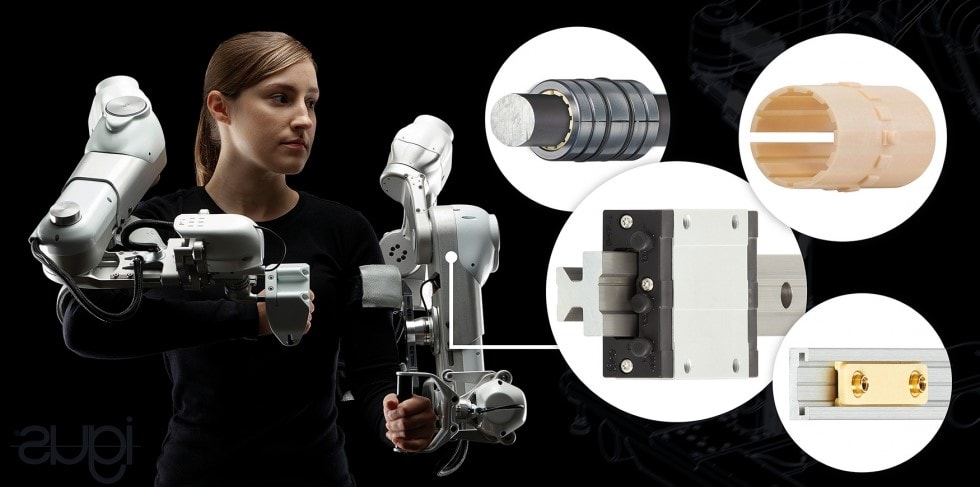Many patients who have suffered a stroke also suffer from hemiplegia (partial paralysis). Exoskeletons like Harmony, created by Harmonic Bionics, can help rebuild damaged nerves in the arms and shoulders. In order to quickly adapt the robotic system to different body sizes in physiotherapy, the designers rely on Igus bearing technology: lightweight, lubrication-free and maintenance-free
Every year 16 million people around the world suffer a stroke. To contribute to the rehabilitation of patients during physiotherapy sessions, the American company Harmonic Bionics has developed an exoskeleton to heal muscle injuries with the support of the National Science Foundation. The robot called Harmony relieves the shoulder joint and maximizes the patient’s range of motion. In this way, the system allows a natural and complete therapy for the arms. To achieve this, Harmony relies on bilateral training therapy. The robot records the movements of the healthy arm and synchronizes them with the side affected by the stroke to help restore the nerves. In order for the exoskeleton to move with the human body, the axis of the robot must be correctly adapted to the patient, because incorrect adjustment could lead to joint injuries. For a quick Harmony adaptation, the designers turned to linear guides and friction bearings from Igus, the specialist in plastics for motion.
Free of lubrication and quickly adjustable
Drylin T and Drylin R linear guidance systems, Drylin R linear bearings and Iglidur friction bearings allow easy adjustment of the system to the patient’s height, arm length, and shoulder width. Polymer bearings made from high-performance material Iglidur J are distinguished by high wear resistance and long service life. With no external lubrication required, the bearings are completely maintenance free, clean, hygienic and suitable for medical technology. All components are made of lightweight materials such as plastic and aluminum. The design is so compact that it can be integrated into the robot’s slim design. “Using Igus polymer bearing technology, the exoskeleton can be fitted to the patient in seconds,” enthuses Rohit John Varghese, Director of Research and Development at Harmonic Bionics.

